Cucumbers, Tomatoes
The most important thing you wouldn't get from popular hydroponics sites: they do get sick. I mean, this info is available, but it is not emphasized enough. What I wrote about sterile environment is just a recommendation in case of microgreens, but in case of cucumbers and tomatoes it is a MUST. Or you will get accused in genocide of vegetables.
A simple tray with water requires daily refils, so if you are going on vacations, use lifehacks. Like this one:
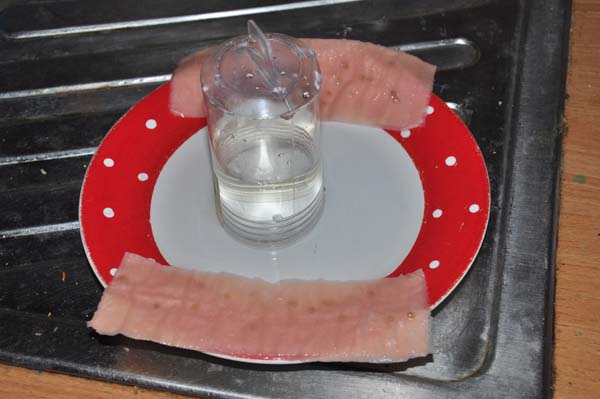
Anyway, our seed in a tray have produced a root:
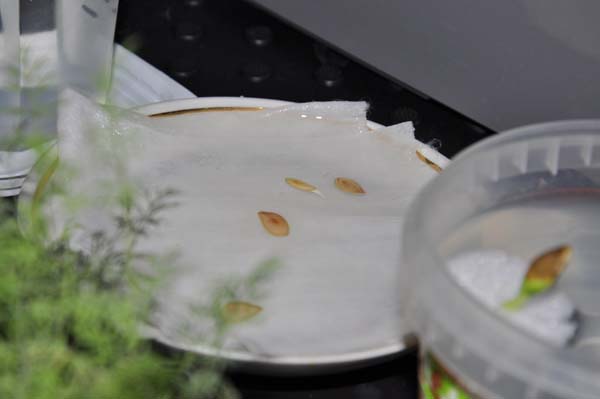
An obvious question: why don't we just do what they do in greenhouses: planting the seed in the tiny plastic cup with turf? We can. But on this site I am describing a universal substrateless approach. After all, the ground is supposed to be excluded by the very idea of hydroponics. Plus, when if comes in contact with a nutrition solution, it "feeds" microbs, not to mention it PROVIDES microbes! Also it clogs pipes (we don't have them in our system, but most other systems do).
So - no substrate! In a huge industrial greenhouse it is a mater of efficiency as you can plant faster, but in an appartment hydroponics you can afford spending few extra minutes.
Ok, back to a tiny root our seed produced. Let's wait for it to reach about a sentimeter, and put the seed in the circular polyethilene disk (root down). Polyethilene, by the way, you can get from boxes with computer parts, it is a well known packaging matherial. Just make sure it is not foam rubber, we need an inert matherial.
Then we set our little raft afloat.
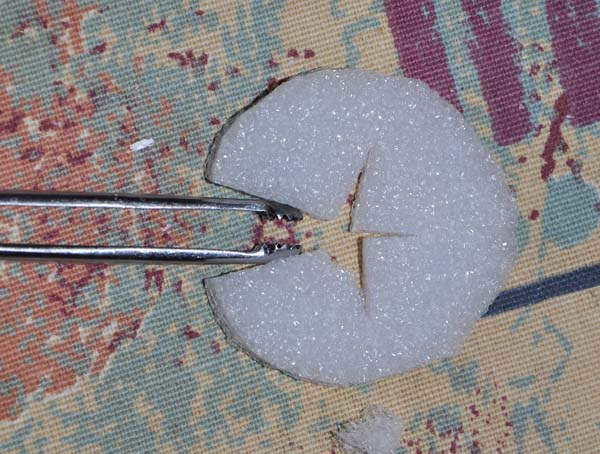
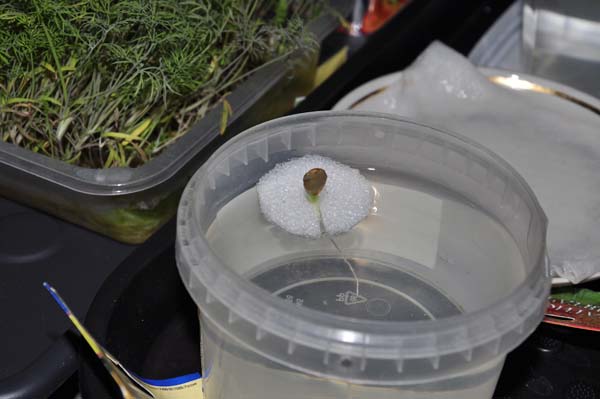
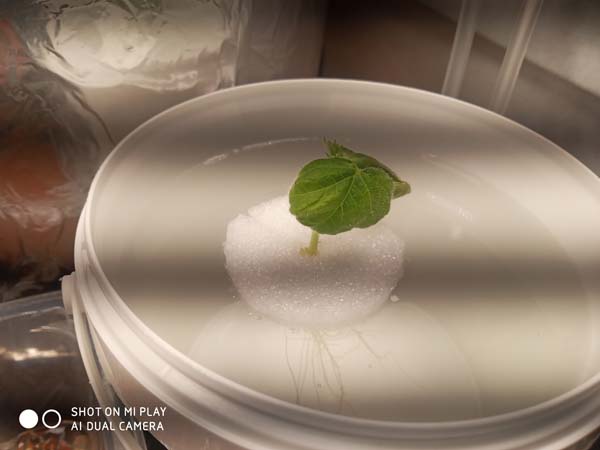
An important point here: root needs to be in water, while leaves should be in the air. An inexperienced person often plants the seed too deep, so the place where leaves grow from gets wet.
Note that at that stage we can use a simple container, without foil. The thing is, we use water, not a nutritious solution, so algae have no food.
When the root grows to about 5 cm, we insert the disk in the plastic "holder", so that the pland doesn't overturn. These plastic "glasses" are available on Alibaba.
Insert the holder (glass) in the hole on a plastic lid of a container or of a bucket. Yes, that's right, you can put it right in the bucket, but... As a beginner, you will have large number of failures, so it is kind of sad to dispose 10 liters of a solution every time something goes wrong. So you can use 0.5-1.0 liter (yougurt) container as an intermediate one.
When (if) you see that the plant is not going to die, you can move it to a bucket.
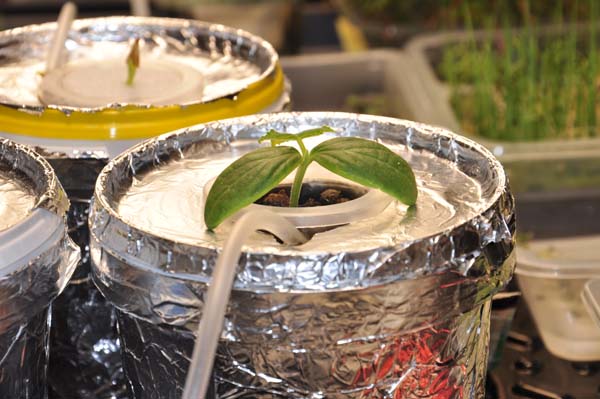
Note that we use airation in this container. The hole in the middle is accompanied by a smaller hole at the side, used for an air pipe.
Another thing you might want to pay attention to. The foamed polyethilene circle is not just cross-cut so we can place the plant in it, but a bit of it is removed in the center, in order to make a hole bigger. With time, when the tomato stalk grows as thick as a finger, it will need space. But until then it hac to be "pinched" so it is held in place.
The design of a cross-cut with a bit in a center removed allows us to "pinch" there plant of any size from hair-wide one to a grown tomato (that will have enough strength to push the plastic to the sides).
This method works well, but of course, there are alternatives. Here is the "fuse" (wick) method:
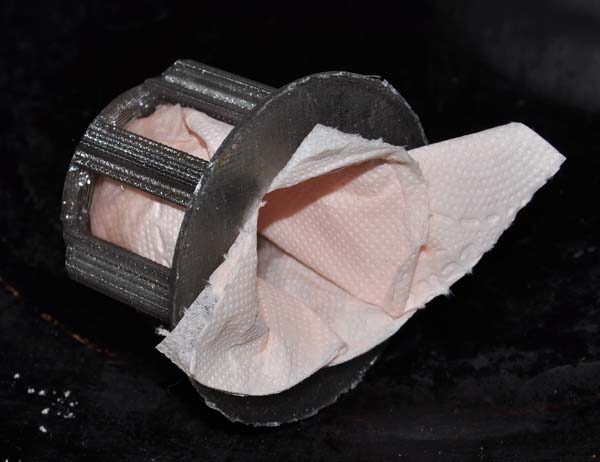
As you can see, paper gets wet and water is getting transported up, watering the substrate (in this case, perlite).
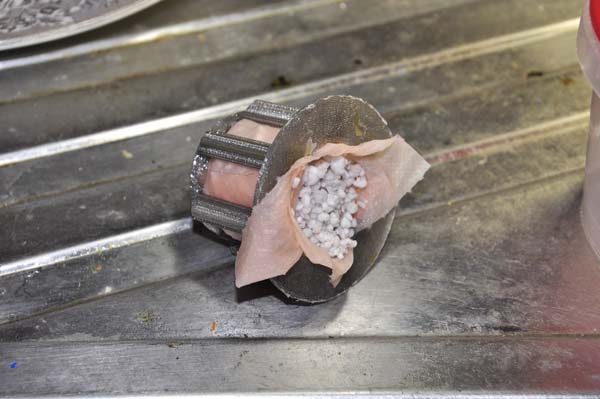
I am not fond of this approach and especially of using toilet paper (microbes will eat it, some perlite will fall off, but it is ok as roots will grow enough by that time). If you want to use "substrate in a bag", use plastic napkin instead. I use this approach when growing strawberries from seeds, these plants are so small that it is impossible to plant them by hand:
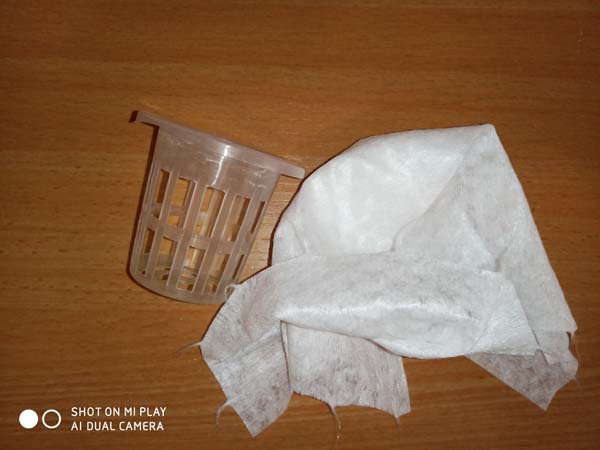
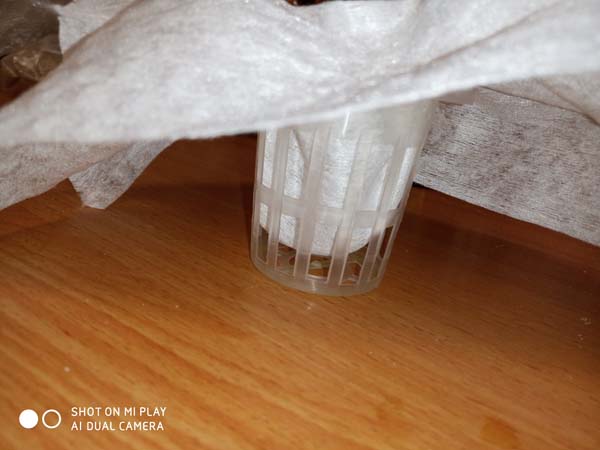
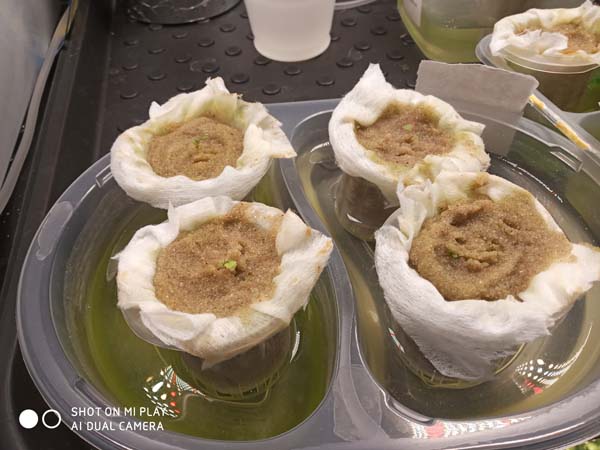
Back to the topic of plastic "glasses" with perlite. It is possible to run a "fuse" down from such a glass, so that water goes up to the plant. It is only required until roots become long enough to reach down to the solution.
So for "glass" with substrate (like perlite) we have three options.
First, our "glass" can touch the liquid. This is not a good idea: water will go up, and algae will grow on a surface of the substrate (as it is always wet, plus well illuminated).
Second, we make it wet only until roots become long enough (longer than the glass). This approach is good, as (see Kratky method above) roots can breathe. But it requires some additional control, particularly, you need to monitor roots to drop the solution level when they are long enough. Also, you will do it as slowest plant has root of a required length... It is ok in home, but it is not a scalable solution (though this is what I use).
Finally, you can use a rope (sold on Ali) that works as a fuse and takes water up. All disadvantages of the first approach, but the level of solution can be low from the very beginning. Actually... it can be as low as few millimeters, which means we can use this approach with nutrient film technique (NFT).
See, wicking is usually considered to be a separate (from NFT) approach, but when it comes to implementing NFT, beginners have some question. For example, if we have to place seeds in plastic holders (glasses) and then install them under the thin flow of running liquid... where the water will come from BEFORE the roots grow down to get to that liquid?
Well, wick can do the trick.
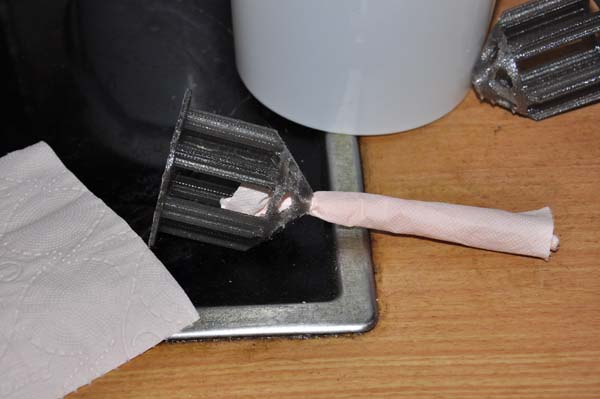
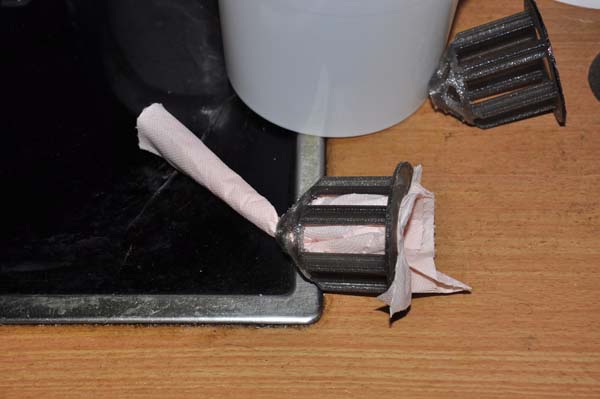
As I have already mentioned, on Ali you can buy wicks better than the toilet paper... I just do not have a photo handy.
The downside of keeping the substrate in a small holder wet is in the way we provide the liquid. In the nature, rain falls from the sky. In the wicking approach described above solution goes upwards. And... When it reaches the surface, it waporizes, while leaving salts (like nutrients you added) behind. As the result, the concentration of salts increases, and the plant can get burns and even die.
So if you are going to use the approach, you will have to wash those salts down from time to time by watering the plants with the clean water.
Needless to say, substrateless approach has no such issues.